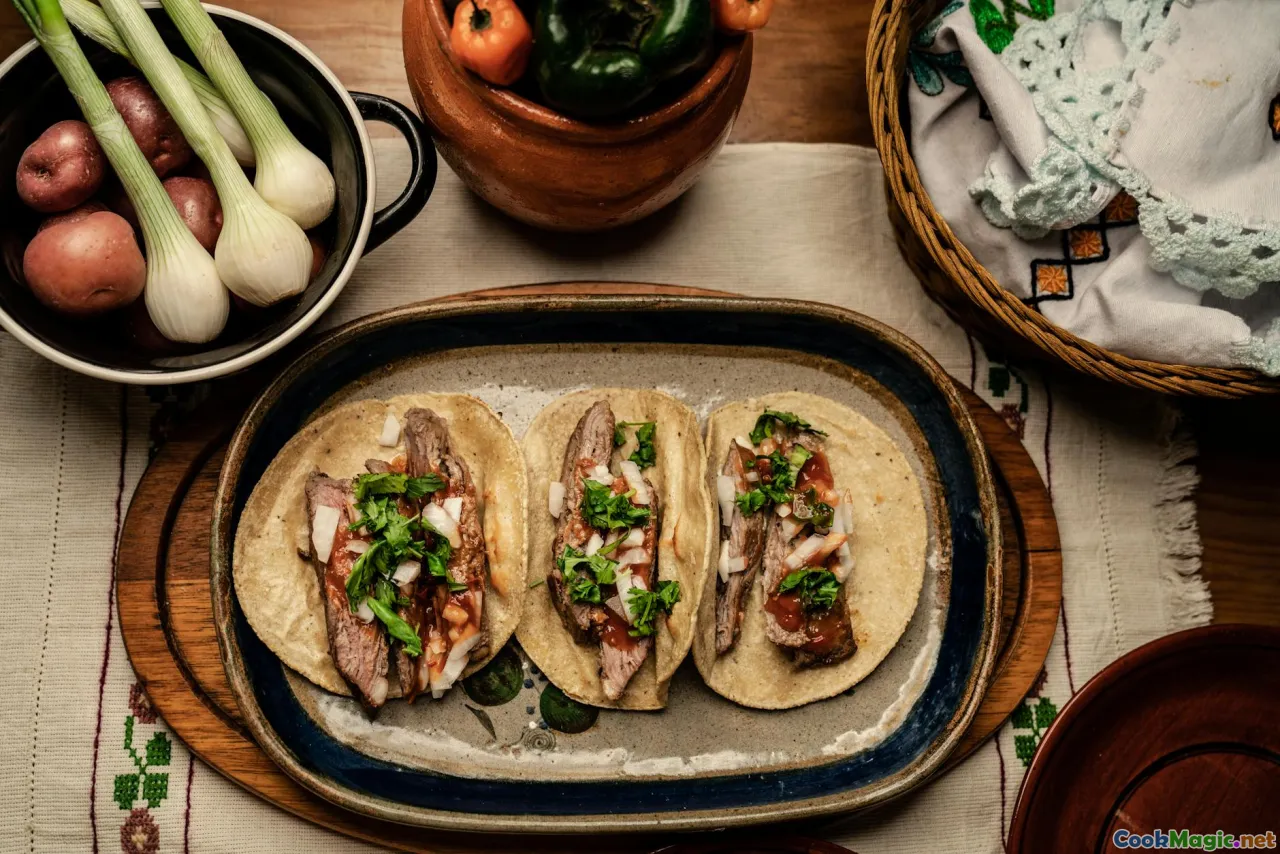Regional Differences in Mexican Tacos Explained
8 min read Discover the vibrant world of Mexican tacos, exploring regional flavors, ingredients, and traditions that make each variation uniquely authentic. May 15, 2025 03:00
Regional Differences in Mexican Tacos Explained
Imagine strolling through the bustling streets of Mexico City, the aroma of freshly grilled meat and warm corn tortillas filling the air. Or perhaps wandering through a quiet town in Yucatán, where the scent of achiote and citrus beckons you to try a different kind of taco. Mexican tacos are more than just handheld morsels; they are living stories, rich tapestries woven from history, geography, and culture. Each region boasts its own unique take—shaped by local ingredients, indigenous traditions, and colonial influences—making the world of tacos an endlessly fascinating culinary journey.
Introduction: A Delicious Cultural Mosaic
Few foods evoke the spirit of a nation quite like the taco. Its simplicity and versatility make it a canvas for local flavors and techniques, transforming humble ingredients into gastronomic masterpieces. While the taco is often associated with Mexico City’s vibrant taquerías or the street stalls of Jalisco, the truth is that every region offers a distinctive version that reflects its identity. From the coastal seafood tacos of Baja to the hearty, meat-stuffed tacos of the north, each variation tells a story of place and people.
The Heart of the Matter: What Defines a Taco?
Before diving into regional differences, it’s essential to understand what constitutes a taco. Traditionally, a taco comprises three core elements:
- Tortilla: Usually made from corn, sometimes wheat, serving as the edible vessel.
- Fillings: Varied proteins or vegetables, often seasoned or marinated.
- Toppings and salsas: Fresh herbs, onions, cilantro, and spicy sauces.
However, the art lies in how these elements are prepared, combined, and presented—differences that are pronounced across regions.
Regional Variations in Mexican Tacos
1. Northern Mexico: The Land of Beef and Flour Tortillas
Characteristics:-Ingredients: The north is known for its cattle ranching, which influences its tacos—beef, goat, and other hearty meats are common.
- Tortillas: Flour tortillas dominate here, providing a softer, more pliable vessel suited for substantial fillings.
- **Typical Tacos:**Tacos de carne asada, al pastor, or cabrito (goat).Experience: Imagine biting into a taco filled with smoky, char-grilled carne asada, topped with chopped onions, cilantro, and a squeeze of lime. The flavors are robust, and the textures satisfying—an embodiment of the rugged, cattle-rich landscape of the region.
2. Central Mexico: The Classic Tacos
Characteristics:-Ingredients: Pork, chicken, and classic preparations like tacos dorados (fried tacos).
- Tortillas: Corn tortillas remain prevalent.
- **Typical Tacos:**Tacos al pastor, carnitas, and tacos de suadero.Experience: Tacos al pastor are perhaps the most iconic—pork marinated in achiote and spices, cooked on a vertical spit, sliced thin, and served with pineapple, onions, and cilantro—an explosion of sweet, spicy, and savory flavors.
3. Yucatán Peninsula: The Mesoamerican Flavors
Characteristics:-Ingredients: Achiote, citrus, and local herbs.
- Tortillas: Corn tortillas, often thin and soft.
- **Typical Tacos:**Papadzules (egg and pumpkin seed sauce), cochinita pibil.Experience: Cochinita pibil tacos are a celebration of slow-cooked pork marinated in achiote, wrapped in banana leaves, and cooked underground—tender, flavorful, with a vibrant orange hue and a smoky aroma.
4. Baja California: Seafood Tacos
Characteristics:-Ingredients: Fresh fish, shrimp, mollusks.
- Tortillas: Small corn tortillas.
- **Typical Tacos:**Fish tacos, shrimp tacos.Experience: Imagine biting into a crispy-fried fish fillet topped with a tangy cabbage slaw, drizzled with creamy sauce—refreshing, light, and perfect for coastal environments.
Cultural and Historical Influences
The diversity of Mexican tacos is rooted in a fascinating blend of indigenous traditions and colonial influences. The use of maize as a staple dates back thousands of years, with indigenous peoples perfecting the art of nixtamalization—a process that enhances flavor and nutrition. Spanish colonization introduced new meats, spices, and cooking techniques, which melded seamlessly with native practices.
For example, the taco al pastor’s vertical spit technique is reminiscent of Middle Eastern shawarma, brought to Mexico by Lebanese immigrants in the early 20th century. Similarly, the use of achiote and citrus in Yucatán reflects indigenous Mesoamerican flavors that have persisted through centuries.
Personal Reflections: The Emotional Connection
For many Mexicans, tacos are more than just food; they are a daily ritual, a shared experience, a connection to heritage. I remember my first trip to Oaxaca, where I tasted tacos de chapulines—grasshoppers seasoned with lime and chili. It was a revelation, a reminder that regional ingredients tell stories of local ecosystems and histories.
Eating tacos in Mexico is an immersive sensory experience—crunching through a crispy shell, savoring the smoky depth of grilled meats, feeling the heat of salsas, and smelling the complex aromas of spices and charred tortillas. Each bite transports you to a different landscape, a different community.
The Modern Twist and Global Influence
Today, chefs worldwide are embracing the diversity of Mexican tacos, experimenting with fusion flavors and innovative techniques. From vegan tacos filled with jackfruit or mushrooms to gourmet versions with artisanal tortillas and exotic toppings, the essence of regional differences continues to inspire.
Yet, at its core, the soul of the taco remains a reflection of its region—its history, environment, and people. Preserving this diversity is crucial to appreciating the rich tapestry of Mexican culinary culture.
Conclusion: A Culinary Journey Worth Exploring
Mexican tacos are a testament to the country’s vibrant cultural mosaic. Each regional variation offers a unique window into local traditions, ingredients, and histories—making every taco an authentic story waiting to be told. So next time you bite into a taco, take a moment to savor not just the flavors but the rich cultural heritage they embody.
Whether you’re a seasoned gastronome or a curious traveler, exploring the regional differences in Mexican tacos is an unforgettable journey—one that celebrates the diversity, history, and soul of Mexico itself.









